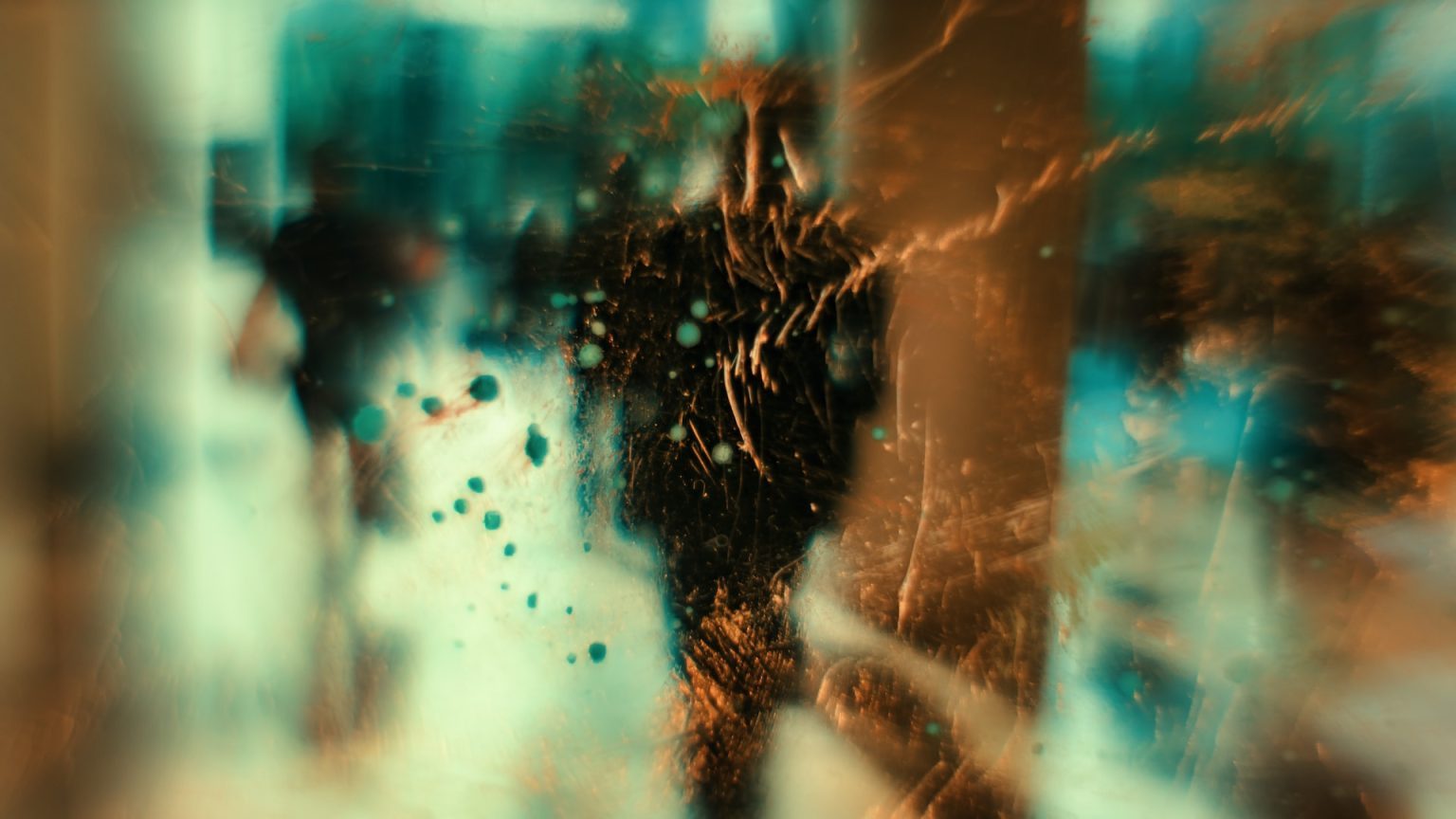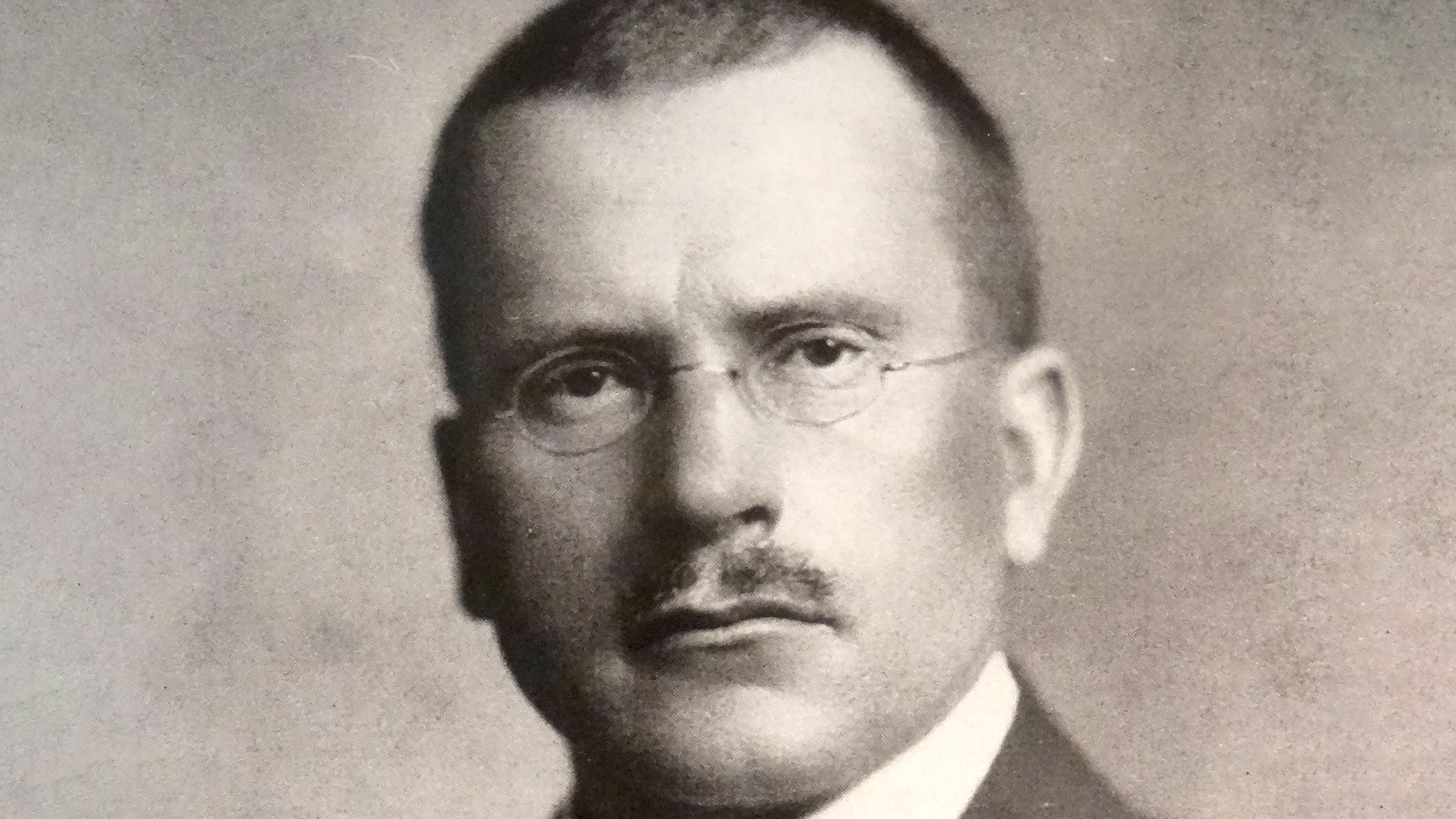The faulty weathermen of the mind

When Peter K. Chadwick was a boy, his mother accused him of being the Devil. She had her own demons—childhood abuse, cheating husband, family betrayals, poverty, cancer. She told Peter he was a “no good,” a “rotter,” and a “bloody Chadwick.” Don’t trust a soul, she told him, and harangued him whenever he began to develop affection for anyone.
Peter grew callous and paranoid, which didn’t earn him any friends. He was bullied at school. Classmates gossiped, slandered, and ridiculed him. After he walked out on his mother when she was on her deathbed, he was overcome with guilt, and took it as proof that he was everything his mother and classmates accused him of being.
Determined to assert his own identity against the world and his mother, Chadwick became a psychology professor. In the summer of 1979, when he was in his early 30s, it all fell apart. Chadwick lost his job as a professor and was eking out a penniless existence in Hackney, London. He was certain he was a target of a campaign of persecution, and began to suspect he was, in fact, the Devil.
While sitting on a bench in Hackney, Chadwick heard a little girl ask her mother, “Is that man possessed by the Devil, Mummy?” The mother looked at Chadwick and replied, “Yes, dear.” Chadwick took the coincidental remark as final confirmation. He was now convinced an organization of technological experts, enemies, neighbors, and newspaper personnel were monitoring his thoughts and sending him replies through the radio. Were they trying to manage his fate, Chadwick asked himself, cure him of his evil?
Chadwick took a temporary office job. One day, he was ruminating on how he should end his life when a man came out of a side office and said to a manager, “So, he’s got to do it by bus, then?!” “Yes,” the manager replied. So that was it. Chadwick had to crush his skull under the wheels of a bus to save his soul. One gloomy September morning, he flung himself headlong into the path of an oncoming bus on West London’s New King’s Road. Remarkably, Chadwick survived with only minor injuries.
The events of Chadwick’s life and his attempted suicide were recounted by Chadwick himself in a 1993 paper published in the Journal of Mental Health titled, “The stepladder to the impossible: A first hand phenomenological account of a schizoaffective psychotic crisis.”1“There is a rich orchestra of forces which eventuate in the psychotic experience,” Chadwick wrote. But one key moment proved pivotal in the unfolding of his break with reality: when “real events, guilt, coincidences, and occasional misoverhearings” shifted his perception of the forces controlling his actions from “internal to external.” He had become possessed by his own imagination.
Psychosis—an umbrella term for a cluster of symptoms that mark a distinct break from “reality”—has long reigned among the biggest mysteries in psychiatry, a field beset by mysteries. Every year, about 37 million people suffer from symptoms of psychosis, which include, among other things, paranoia, trouble thinking logically, and confused speech. Many people develop these symptoms with the onset of schizophrenia—a devastating mental illness that tends to feature socially unusual behavior, carries a high risk of suicide, and lacks a cure. But others have symptoms without ever developing that disease.
Some of the earliest accounts of psychosis come from ancient Greek and Roman literature penned in the fifth century B.C. Philosophers and scientists have struggled since that early time to understand how it arises in the mind—and how to treat it. This is due, in part, to the diversity and idiosyncrasy of the symptoms that constitute it. Some sufferers experience visual or auditory hallucinations, but others do not, and these symptoms may or may not coincide with strange fixed beliefs. As in Chadwick’s case, someone in the midst of a psychotic episode might experience delusions of reference that transform anything from the outside world, including billboards or conversations, into urgent portents intended just for them.
While the neuroscientific underpinnings of such phenomena remain elusive, scientists who study perception are beginning to develop the first compelling framework to explain what happens when someone experiences a psychotic break. That framework is based on an increasingly popular theory of perception called predictive processing.
According to predictive processing’s account of human consciousness, we are not sensorial cameras, passively taking in the sights, sounds, smells, and textures of which our reality is composed. Instead, we construct our perceptual experiences by apprehending—predicting—what all our sensory inputs mean, based on our past experiences (or “priors”). When something new emerges in our experience, something we have not encountered before or are not expecting, the brain may misinterpret the signals and make a faulty prediction about what it is sensing—if we have never felt a mild earthquake before, we may briefly mistake it for a dizzy spell, for instance, or vice versa—but as more information arrives, the brain updates and corrects its internal models of the world.
But for people who are experiencing psychosis or schizophrenia, “control” over this internal model of reality seems to give way. These individuals can end up constructing a model that leans too heavily toward prior expectations, in a way that appears to “run roughshod” over the sensory evidence flowing in, says Chris Frith, a British neuroscientist some consider the father of predictive processing. Presented with new information, the system tends to behave a bit like a stuck camera, super-imposing old images over new ones.
“It’s like if someone is constantly predicting the weather wrong, you would ignore them when they tell you it’s going to rain,” says Frith, who is a professor emeritus at the Wellcome Trust Centre for Neuroimaging at University College London. But people with schizophrenia keep listening to the faulty weathermen. They fail to correct their flawed models with new information. These glitches cause the alterations in perception, belief, and the self that people with psychosis experience, a growing body of research suggests, leading them to see or hear or things that are not there.
One of the first clues that schizophrenia and psychosis might result from faulty predictive processing came from research into, of all things, tickling. When healthy people try to tickle themselves, they can’t. They do not experience the associated ripples of pleasurable feeling and queasy laughter, the crawling sensation of electricity riding up the skin. But this rule does not hold with patients who have schizophrenia. When they tickle themselves, they feel tickled.
In research published in 2000, neuroscientists Sarah Blakemore, Daniel Wolpert, and Frith set out to understand this unusual hallmark of the disease.2 In a set of experiments, they tested two groups of people on their tickle reflexes: one was symptom-free and the other had experienced auditory hallucinations or so-called “passivity”—the switch in perception that makes people with psychosis feel like they’re being acted upon by unseen forces in their environment.
The healthy group, it turned out, were only able to tickle themselves when they did so using a robot arm that had been programmed to produce a delay. Frith posited that something similar happens to people with schizophrenia. A faulty expectation and a delay in the delivery of sensory information could lead them to feel that their own actions had been initiated by some external force. “At the bottom end of the hierarchy,” Frith says, people with schizophrenia “have a weaker sense of what to expect.” This could account for their susceptibility to “delusions of control,” wherein they suspect that spies or aliens are orchestrating their actions.
In earlier theoretical work, Frith had traced such delusions of external control to a deficiency in “self-monitoring.” Other neuroscientists have since made similar arguments.3 According to their reasoning, a process of self-monitoring, a kind of internal CCTV, or central feedback loop, allows our nervous systems to distinguish between self-generated and externally generated stimuli. But when something in this monitoring system is broken, it leads to undetected mismatches between intent and action, and self-generated stimuli are erroneously attributed to external causes. The errors in attribution of stimuli don’t get corrected. Predictive processing breaks down.
Perceptual illusions can and do occur in healthy people—they are at the root of most magic tricks, for example, which work by upending expectations. In fact, scientists say that research demonstrating the critical role expectation plays in perceptual illusions in healthy people provides further evidence that faulty predictive processing is what drives psychosis. For instance, people whose sensory inputs are cut off—if they enter a sensory deprivation tank, say, or experience sight loss—can experience florid visual hallucinations. And among patients with Charles Bonnet syndrome, diminished visual acuity gives rise to intricate phantom images of landscapes, people, and animals. Paul Fletcher, a psychiatry and neuroscience researcher at Cambridge University with a special interest in psychosis, explains that in such cases, “cutting off the sensory input leads to an excessive overweighting of prior expectations.” Deprived of the sights we’re accustomed to seeing, we might repopulate our mind’s eye with visions—real or imagined—we have encountered in the past.
A similar glitch in the brain’s machinery occurs with a phenomenon called the “hollow mask illusion,” a common visual misconception that causes most healthy people to view the concave side of a mask as though its features were convex, or sticking out in their direction. According to the predictive coding framework, this illusion occurs because we fill in the hollows with our prior expectations, accrued over a lifetime of observing and committing to memory fully convex faces.
For people with schizophrenia, oddly, the hollow mask seems to look just like a hollow mask. The reason for this is not entirely clear. But Fletcher theorizes that we have hierarchical sets of expectations—those that operate on a basic level, right where we receive the information from our sensory feelers, and those that develop one level deeper, where we store the blueprints for our inner world-building. “It’s like a whole series of cogs interacting with each other,” Fletcher explains. “And if you’re not using your expectations at that lower level, then there’s a lot of unexplained stuff that is percolating forward.” The bigger the errors, ambiguities, and unexplained signals coming through at the bottom level, the more “noise” we have to contend with when we cobble together our models of reality.
Curiously, while people with schizophrenia don’t see normal faces in the hollow mask, they do seem to have a heightened propensity to see faces and other patterns in noise more broadly. In a 2015 study, Fletcher and Christoph Teufel, a specialist in the neuroscience of vision at Cardiff University, showed a bunch of two-tone images with hidden faces in them to two groups: one comprising people at risk of developing full-blown psychosis, and especially prone to hallucinations, and a healthy control group.4 They then showed them the clear source image—of a face—which had been obscured in the two-tone image. This would function as their “prior expectation.”
“What Christoph predicted was that people with hallucinations would actually have an advantage in doing that task, because they can take prior expectations and use them more strongly,” recalls Fletcher. Though it was what he expected, he was still surprised to find it was indeed the case. The group with symptoms of early psychosis were exceptionally good at spotting the hidden image of a person, when compared to the other group.
When patients who have schizophrenia tickle themselves, they feel tickled.
Many researchers believe that psychosis actually exists on a continuum, that the general population exhibits varying levels of proneness to it, but that these manifest in ways that do not greatly disturb the healthy person’s functioning. For example, hallucination-proneness might manifest as a tendency to glimpse dark forms scurrying across the floor if you’ve once spotted a cockroach, and delusion-proneness in being quick to suspect that peals of laughter in a cafe must be directed at you. In one experiment, Fletcher and Teufel gathered two such groups of otherwise healthy people, one prone to hallucinations and the other to delusions, and tested their performance at spotting the hidden faces lurking among abstract black-and-white images. The hallucination-prone group proved especially good at the task.
To Teufel, this finding provides evidence “that an undue reliance on prior knowledge in vision might precede mental illness, rather than being a consequence of it.” The finding also chimes in with previous work5 that has6 found that strange visual symptoms—such as an altered perception of others’ faces and bodies, changes in form or sensitivity to light, and a tendency to see the contours of things in a warped or blurry manner—illusory patterns that might result from lingering previous impressions—can powerfully predict the onset and severity of psychosis. “It is therefore possible,” Teufel adds, “that this undue reliance [on priors] is one of the risk factors for the development of visual hallucinations.” A subsequent study published in Frontiers in Psychology in 2021 by some German researchers provides further support for this idea.7
Like visual hallucinations, auditory ones seem to derive from faulty expectations, as well, according to a 2017 study published in Science.8 Lead author Philip Corlett—an experimental psychologist at Yale, who has been studying the formation of delusional beliefs for the past two decades, and his colleague A.R. Powers, together induced what they called “conditioned hallucinations” among four groups of subjects. These included one drawn from psychiatric patients who heard voices, those with similar illness who did not hear voices, another made up of self-identified psychics without a psychiatric diagnosis, who heard voices but attributed them to “metaphysical” sources, and a control group without diagnosis or voices. All four groups were trained to associate a checkerboard pattern with a barely audible sound, and reported hearing the tone when they saw the checkerboard, even when a tone was not played. “And that was particularly true with somebody who heard voices outside of the lab in their everyday life,” Corlett said.

Drug trip accounts often bear striking similarities to accounts of psychotic breaks: the strange dream-like feeling that induces you to see your surroundings in a new, heightened, and meaningful light. The occasional paranoia. The tendency to spot faces everywhere you look. So it’s fitting that researchers have used psychedelics to help them study the predictive processing account of psychosis.
One drug that offers some tantalizing clues is the dissociative ketamine, which Corlett and Fletcher have used to model psychosis, just as researchers in the ’20s and ’30s did with mescaline and LSD. “We knew from ketamine’s use as an anesthetic that it caused ‘emergence phenomena’; when people woke up from the anesthesia they resembled patients with schizophrenia in their experiences and thoughts,” Corlett explains. The drug has been known to safely mimic both the positive and negative symptoms of schizophrenia, including hallucinations, and acts on—that is, blocks—the transmission of the neurotransmitter glutamate, which is implicated in learning and the consolidation of memory.
In a 2009 study, Corlett found that, when healthy people were administered ketamine, it led to a “perturbation” in the signaling of prediction errors, which was “almost identical to that observed in people experiencing a first episode of psychosis.”9 Essentially, when prediction errors repeatedly engage a memory (or belief), they lead to its reconsolidation and strengthening, rather than its weakening (or extinction),” he adds. That persistent glitch could offer clues about the strange tenacity—and malleability—of delusions over time.
Last year, Corlett repeated his experiments that produced conditioned auditory hallucinations in people with schizophrenia. But this time he also measured participants’ levels of the neurotransmitter glutamate—whose transmission is blocked by ketamine—and struck upon something of a neurochemical smoking gun. Those who had low levels of glutamate in the anterior insula, a region associated with conscious awareness, had stronger prior beliefs about the connection between the checkerboard and the tone, predisposing them to conditioned hallucinations.
In other words, glutamate is quite likely tangled up in the overweighting of prior expectations, and could play a key role in generating hallucinations. Probing that finding further could bring scientists closer to understanding, on a neurobiological level, what was happening when Chadwick’s mind was overtaken by the “deranged poetry of thought” that made him leap in front of a bus. And possibly, even how to treat it.
And yet, as Chadwick writes in his account, drugs alone may not be sufficient for a cure. His own recovery required not just antipsychotics, but, among other things, “painful insight,” as well as “reality testing”—clarification of what was internal and external—and “thousands of hours of refreshing sprightly chatter about nothing of much meaning and importance,” to enculturate him back into society at an everyday level. He had to, in effect, retrain the faulty weathermen of his mind.
References
1. Chadwick, P.K. The stepladder to the impossible: A first hand phenomenological account of a schizoaffective psychotic crisis. Journal of Mental Health 2, 239-250 (1993).
2. Blakemore, S.J. & Wolpert, D.M. Why can’t you tickle yourself? Neuroreport 11, R11-16 (2000).
3. Frith, C.D. The positive and negative symptoms of schizophrenia reflect impairments in the perception and initiation of action. Psychological Medicine 17, 631-648 (1987).
4. Teufel, C., Subramaniam, N., Dobler, V., & Fletcher, P.C. Shift toward prior knowledge confers a perceptual advantage in early psychosis and psychosis-prone healthy individuals. Psychological and Cognitive Sciences 112, 13401-13406 (2015).
5. Keane, B.P., Cruz, L.N., Paterno, D., & Silverstein, S.M. Self-reported visual perceptual abnormalities are strongly associated with core clinical features in psychotic disorders. Frontiers in Psychiatry 9, 69 (2018).
6. Pokorny, V.J., Lano, T.J., Schallmo, M.-P., Olman, C.A., & Sponheim, S.R. Reduced influence of perceptual context in schizophrenia: Behavioral and neurophysiological evidence. Psychological Medicine 51, 786-794 (2021).
7. Stuke, H., Kress, E., Weilnhammer, V.A., Sterzer, P., & Schmack, K. Overly strong priors for socially meaningful visual signals are linked to psychosis proneness in healthy individuals. Frontiers in Psychology 12, 583637 (2021).
8. Powers, A.R., Mathys, C., & Corlett, P.R. Pavlocian conditioning-induced hallucinations result from over-weighting of perceptual priors. Science 357, 6351 (2017).
9. Corlett, P.R., Krystal, J.H., Taylor, J.R., & Fletcher, P.C. Why do delusions persist? Frontiers in Human Neuroscience 3, 12 (2009).
This article originally appeared on Nautilus, a science and culture magazine for curious readers. Sign up for the Nautilus newsletter.





